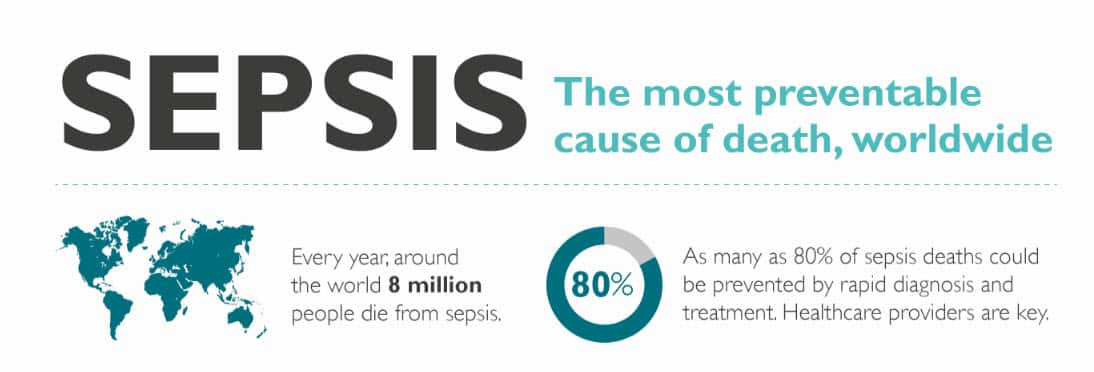Do you know the most preventable cause of death?
0:30
Sepsis affects 1.7 million people per year in the U.S., and 270,000 of those people die.1,2 That equates to one victim every 2 minutes.3 In our hospitals, sepsis is the leading cause of death1 and it also accounts for the leading cause of hospital readmissions.4
Hospitals, however, are just a lead indicator. Sepsis is a civic-wide problem with 87% of cases originating in the community.5 In response, the National Association of EMS Educators (NAEMSE) has issued a position paper urging preparedness by EMS to deal with the current sepsis epidemic. NAEMSE points out that EMS transports five patients with sepsis for every two with a myocardial infarction, and that more than half of patients with sepsis who arrive at hospital EDs are transported by EMS.6
Regardless of the setting, pre-hospital or hospital, the critical factor in patient survival is time—time to recognition and time to treatment. The risk of death from sepsis increases by as much as 8% for every hour that treatment is delayed.7 Sepsis is a medical emergency and its symptoms—which can often be masked as a stroke or other conditions—must be treated quickly to reduce the risk of death. As many as 80% of sepsis deaths could be prevented with rapid diagnosis and treatment.8
The Sepsis Alliance and Global Sepsis Alliance have declared September 13, as World Sepsis Day with the entire month of September dedicated to sepsis awareness. To support their efforts, we are sharing with you some of our recommended content. We hope that it proves useful as you create a community of providers who will stop time for a patient with sepsis and prevent lost time from becoming an irreversible forever event.
